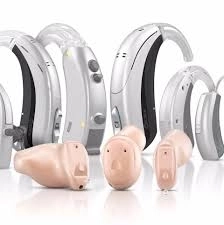
Behind-the-Ear or In-the-Ear Hearing Aid? A Guide with Mr. Mohamed Lotfy to Help You Choose
Published on: 2025-06-28 | Written by: Al Amal Company for the Hearing Impaired for Medical Hearing Aids Mr. Mohamed Lotfy
Choosing the right hearing aid depends not only on the level of hearing loss but also on comfort, appearance, ease of use, and lifestyle.
Mr. Mohamed Lotfy explains that each type of hearing aid has specific advantages based on the patient’s daily activities, hearing profile, and budget.
Behind-the-Ear (BTE) Hearing Aids: Why Are They So Popular?
BTE hearing aids sit behind the ear and connect to an earmold or thin tube that goes into the ear canal.
According to Mr. Mohamed Lotfy, this type is suitable for various degrees of hearing loss and offers the following advantages:
-
High amplification power, ideal for severe to profound hearing loss
-
Longer battery life
-
Easier to clean and maintain
-
Compatible with Bluetooth and advanced programming technologies
In-the-Ear (ITE) Hearing Aids: Comfort with a Discreet Look
ITE hearing aids are custom-made to fit the shape of the ear and sit entirely within the ear canal.
Mr. Mohamed Lotfy notes that these are ideal for mild to moderate hearing loss and are favored because:
-
They are cosmetically appealing and nearly invisible
-
Suitable for glasses wearers and active individuals
-
Easier to use for those with limited hand dexterity
However, they may not be the best option for people with heavy earwax or severe hearing loss.
How Do You Choose the Right Type?
Mr. Mohamed Lotfy emphasizes that the selection should be based on:
-
A comprehensive audiometric assessment
-
An accurate ear impression for a proper fit
-
The patient's lifestyle and personal needs
-
Choosing a model that is user-friendly
Follow-Up After Fitting
Mr. Mohamed Lotfy highlights that service does not stop after purchase. He offers:
-
Precise programming based on the hearing test
-
Regular follow-ups for fine-tuning
-
Original batteries and fast maintenance when needed
Conclusion
The difference between behind-the-ear and in-the-ear hearing aids is not just about appearance—performance, comfort, and suitability matter more.
Your best choice starts with the advice of a qualified specialist like Mr. Mohamed Lotfy, who provides comprehensive care from evaluation to fitting and long-term support.

